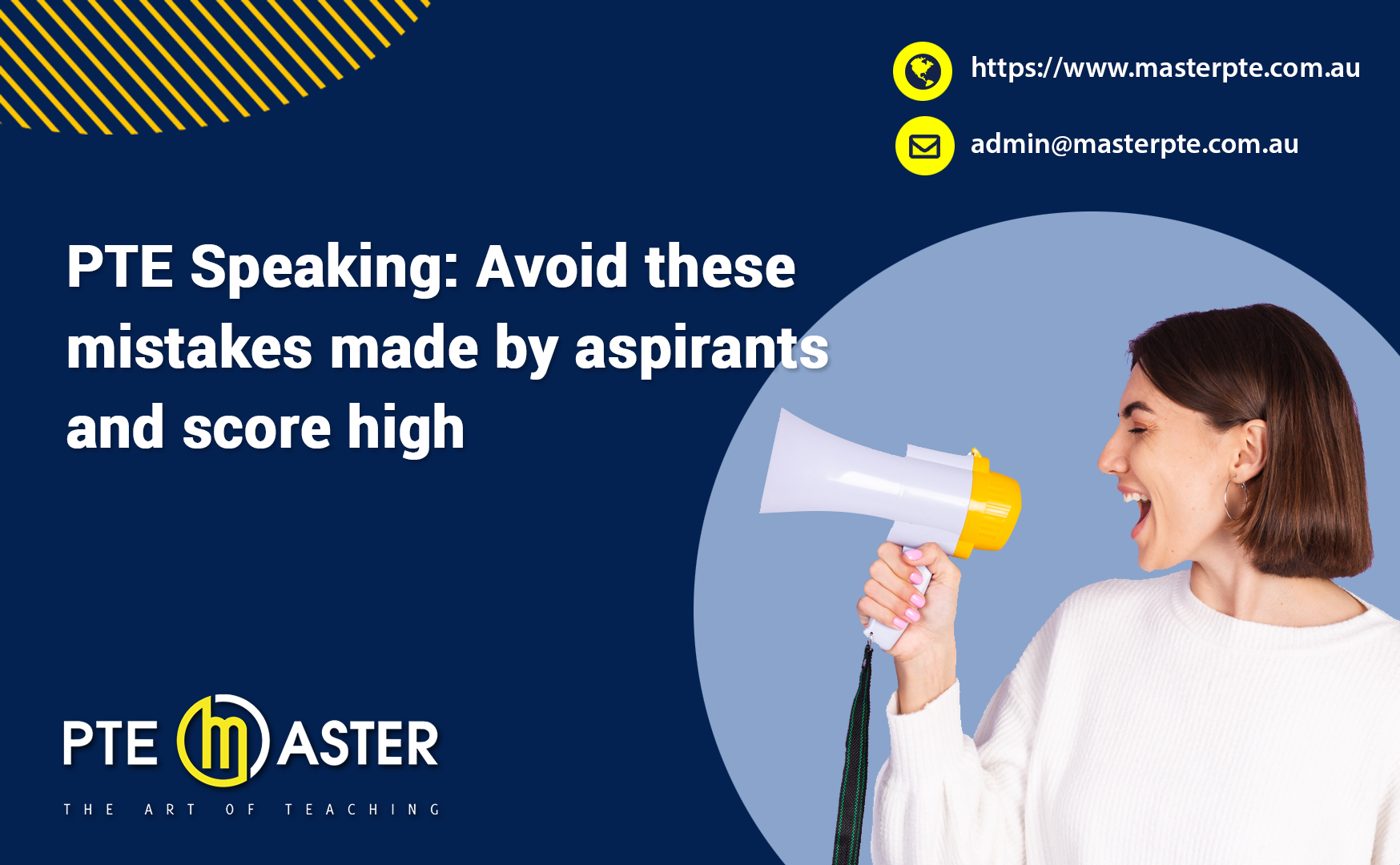
One of the most commonly heard refrains amongst the PTE aspirants is “I am a native speaker, but couldn’t crack the PTE speaking section. “ One of the most fundamental mistakes an aspirant can make is the incorrect positioning of the mic. Due to this mistake, answers are not recorded clearly and it could lead to unexpectedly low marks in those speaking sessions.
Wondering how to secure a high score? We are here to help. Let us take a look at the most commonly made mistakes.
Often, aspirants make the mistake of becoming overconfident with the language (especially when they are native speakers) or becoming very anxious (when they do not know the answer). In both the aforementioned cases, students tend to speak very fast. It is therefore very important to remember that your PTE speaking test is not a test of your speed.
Speaking so fast is highly likely to affect your oral fluency score. Thus, it is recommended that while recording answers, you should try and speak at a normal pace - which is neither too fast, nor too slow!
Irrespective of whether you are a native speaker or not, it is absolutely essential to refrain from using any kind of non-literary words or informal language in your sentences. For instance, you could be saying ‘gonna’ or ‘gotta’ instead of ‘have to’ and ‘going to’.
Therefore, remember to always keep your language professional and strictly PTE academic. Rather than speaking casually in the test, it is wise to display your knowledge of a variety of both simple and complex words.
While it is absolutely normal to feel anxious, nervous, or underconfident, nothing justifies the usage of fragmented speech in the test. Fragmented speech is a bad sign and lowers your oral fluency score. If you fail to connect with what you are going to say next, complete the statement and do not give any pauses. At Least completing the sentence will help you attain a better oral fluency score.
Whether or not you have decided on the structure of your answer, it is not advisable to use any fillers while speaking. Candidates often become nervous when they do not remember and thus, naturally, they will resort to using more fillers like in a regular conversation which should be avoided at all costs.
Wondering how this could be avoided? Let us tell you how. Before you begin to speak, you get enough time to think about the structure of the answer. Use that period effectively and plan well in advance. Once you have thought of the structure, repeat it in your mind several times so that you will not have any disconnect from speaking.
This will not only improve your score but also shows that you are confident and that you can hold the language. Also, remember to speak at a normal pace so that you can quickly think about what you have to speak next with ease.
To master this, you can do the following:
1.Practice, practice, practice
2.Record your voice, listen to those tracks and evaluate them for oral fluency and assess the speed of your speaking.
3.Direct your focus towards finding the context and the focus points in a question to avoid the usage of any filler words.
4.Practice planning and deciding the structure in your mind to avoid any fragmentation in speech.
Getting a good grip on the questions of the PTE speaking section is only possible through practice. The right platform can offer the right guidance along with industry-relevant practice questions, PTE exam questions, and study materials for practice. Login to PTE tutorials to fulfill any such requirements and use the mobile app to record your answers. Happy practicing!